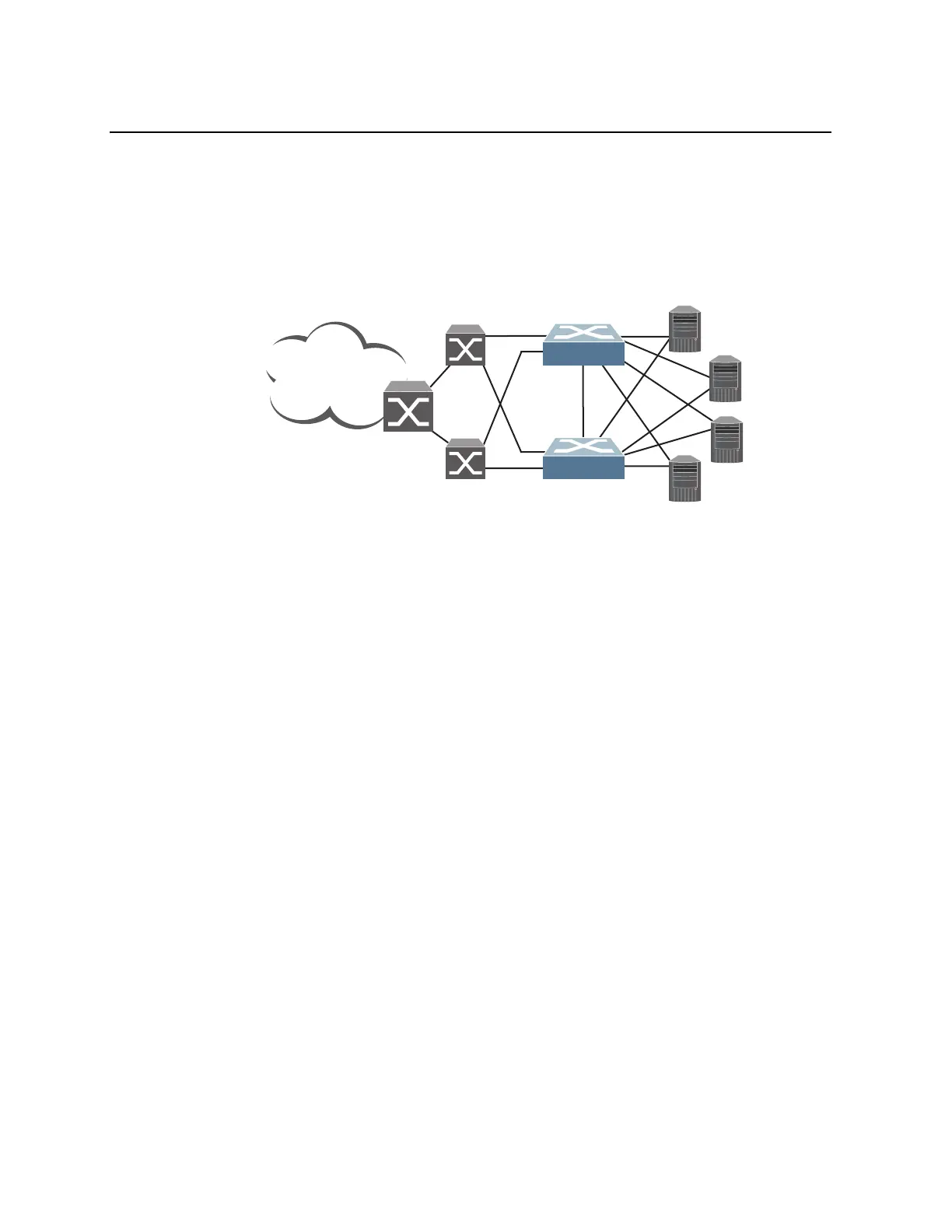304 RackSwitch G8000: Application Guide
High Availability Configurations
VRRP High-Availability Using Multiple VIRs
Figure 39 shows an example configuration where two G8000s are used as VRRP
routers in an active-active configuration. In this configuration, both switches respond
to packets.
Figure 39. Active-Active Configuration using VRRP
Although this example shows only two switches, there is no limit on the number of
switches used in a redundant configuration. It is possible to implement an
active-active configuration across all the VRRP-capable switches in a LAN.
Each VRRP-capable switch in an active-active configuration is autonomous.
Switches in a virtual router need not be identically configured.
In the scenario illustrated in Figure 39, traffic destined for IPv4 address 10.0.1.1 is
forwarded through the Layer 2 switch at the top of the drawing, and ingresses
G8000 1 on port 1. Return traffic uses default gateway 1 (192.168.1.1).
If the link between G8000 1 and the Layer 2 switch fails, G8000 2 becomes the
Master because it has a higher priority. Traffic is forwarded to G8000 2, which
forwards it to G8000 1 through port 4. Return traffic uses default gateway 2
(192.168.2.1), and is forwarded through the Layer 2 switch at the bottom of the
drawing.
Internet
Enterprise
Routing Switch
VIR 1: 192.168.1.200 (Master)
VIR 2: 192.168.2.200 (Backup)
VIR 1: 192.168.1.200 (Backup)
VIR 2: 192.168.2.200 (Master)
NIC 1: 10.0.1.1/24
NIC 2: 10.0.2.1/24
NIC 1: 10.0.1.2/24
NIC 2: 10.0.2.2/24
NIC 1: 10.0.1.3/24
NIC 2: 10.0.2.3/24
NIC 1: 10.0.1.4/24
NIC 2: 10.0.2.4/24
L2 Switch
L2 Switch
1
2
4
4
1
2
Server 1
Server 2
Server 3
Server 4
Switch 2
Switch 1

